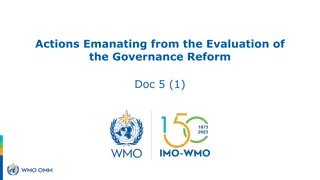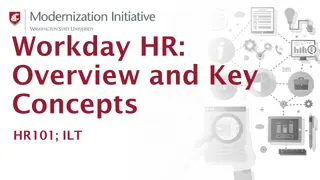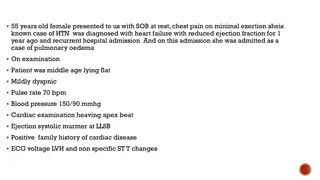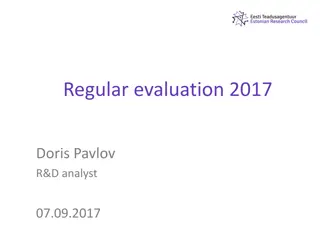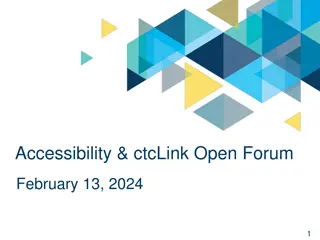
Effective Communication and Evaluation Strategies for Healthcare Innovation Project
Discover how the communication and evaluation plan for John Hopkins Hospital aims to promote innovation in healthcare by enhancing stakeholder communication, teamwork, and resource coordination. The plan includes strategies such as creating a company website, utilizing social media platforms, sending periodic memos, and using online workspaces. Evaluation focuses on goals like improving quality of healthcare services, reducing costs, and boosting stakeholder satisfaction through efficiency and effectiveness. Milestones include adopting health information technology, creating a knowledge base, and facilitating employee training on electronic health record systems. Various metrics will measure progress by evaluating goal-oriented data and target-driven data from healthcare systems.
Download Presentation

Please find below an Image/Link to download the presentation.
The content on the website is provided AS IS for your information and personal use only. It may not be sold, licensed, or shared on other websites without obtaining consent from the author. If you encounter any issues during the download, it is possible that the publisher has removed the file from their server.
You are allowed to download the files provided on this website for personal or commercial use, subject to the condition that they are used lawfully. All files are the property of their respective owners.
The content on the website is provided AS IS for your information and personal use only. It may not be sold, licensed, or shared on other websites without obtaining consent from the author.
E N D
Presentation Transcript
Communication and Evaluation Plan TIFFANY HENDERSON SOUTHERN NEW HAMPSHIRE UNIVERSITY AUGUST 1, 2020
Communication Plan The project will feature a communication plan that will focus on enabling efficient communication among various stakeholders. The communication plan will be used to promote divergent thinking techniques so as to enhance participation of both employees and healthcare administrators in the planning and implementation of the strategic plan (Dennis, 2019). The communication plan will also enhance teamwork activities as well as support effective coordination of healthcare resources.
Communication Strategies and Practices The communication strategies that will be used to enhance team communication as well as stakeholders communication include: A company website will be created to support communication with external stakeholders. Social media platforms will be used to increase communication capacity of the hospital towards external stakeholders. Periodic memos will be sent to internal stakeholders, employees and administrators, on clinical procedure changes. Team communication will be supported through premium online workspaces, such as Slack and Zoom, on project progress and discussions.
Evaluation Strategy: Goals and Milestones The main goal of the strategic plan involves promoting innovation policies in John Hopkins Hospital. The hospital s innovation policy will be based on achieving three fundamental objectives: To improve quality of healthcare services. Reduce the cost of healthcare resources. Increase the satisfaction levels of various stakeholders through efficiency and effectiveness of service (Johansen, 2015).
Goals and Milestones The milestones of the strategic plan comprise of: Adopt health information technology and measure its impact on clinical procedures. Creation of an organizational knowledge base to support continuous learning and employee development in John Hopkins Hospital. Facilitate employee training on electronic health record system functionalities (Khan et al. 2018).
Measures of progress Various operation metrics will be used to assess the performance of the strategic plan towards achieving its goals and objectives. The measure of plan s progress in the hospital will consider evaluation of two types of data obtained from the health information systems: Goal-oriented data Target-driven data (Hebda, Hunter & Czar, 2019). Goal-oriented data will consider heath indicators such as patient experience, mortality, healthcare safety, satisfaction of stakeholders to determine the performance of the strategic plan. Target-driven data will encompass the evaluation of data related to patient readmission, timeliness of care, application of medical imaging.
Stakeholder Satisfaction The strategic plan also focuses on promoting stakeholder satisfaction on healthcare outcomes in relation to John Hopkins Hospital. Information on healthcare outcomes will be collected through online surveys, feedback from patients and clinicians, and assessment of electronic health records system reports (Pathman, 2019). The data will be analyzed by a selected cross-departmental administrative panel.
Contd The panel will also feature operational level representatives as well as external stakeholder representatives. The panel will project the various stakeholders that will be considered during the development and execution of the strategic plan, including the patients, the clinical professionals, and the hospital administration.
References Dennis, C. (2019). Strategic planning a health system operational perspective. South Australia, Australia: Flinders University. Hebda, T., Hunter, K., & Czar, P. (2019). Handbook of informatics for nurses and healthcareprofessionals (6th ed.). New York,NY: Pearson. Johansen, S. (2015). Strategic planning for health: a case study from Turkey. Copenhagen, Denmark: WHO Regional Officefor Europe Khan S, Vandermorris A, Shepherd J, et al. (2018). Embracing uncertainty, managing complexity; applying complexity thinking principles to transformation efforts in healthcare systems. BMC Health Services Research, 192. Pathman, D. (2019). Changes in Rates and Content of Primary Care Visits within an Evolving Health Care System. Annals Family Medicine, 17(6), 482-484.

